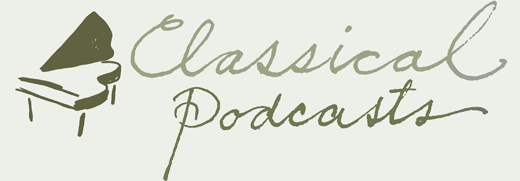Listening Guide
The Work
Date(s) of Composition: 1888-1894; published by Hofmeister, Leipzig in 1897
Place of Composition: Leipzig, Hamburg and Steinbach
Premiere: first three movements: 4 March 1895; complete symphony: 13 December 1895 both given in Berlin under Mahler’s direction.
Orchestration:
4 flutes (doubling with piccolo); 4 oboes (3rd and 4th double with English horn); 4 clarinets in B-flat (3rd doubles with bass clarinet); 2 clarinets in E-flat (2d doubles with 4th clarinet in B-flat); 4 bassoons (4th doubles with contrabassoon); 6 horns; 4 off-stage horns (double as 7th, 8th, 9th and 10th horns); 6 trumpets (4 off-stage, 5th and 6th returning to the on-stage orchestra); 4 trombones; bass tuba; organ; 2 harps; strings; percussion: 2 sets of timpani (3 to a player) (3rd timpani in the finale); bass drum; cymbals; high tam-tam; low tam-tam; triangle; snare drum; glockenspiel; 3 deep bells of undetermined pitch; rute (reeds).
Performers: Edith Mathis, soprano; Norma Procter, contralto; Bavarian Radio Chorus & Orchestra under Rafael Kubelik
Off-stage band: timpani; bass drum; cymbals; triangle and instruments noted above. Soprano and alto soloists; mixed chorus.
Text(s): Urlicht from Des Knaben Wunderhorn (fourth movement); Resurrection Hymn by Friedrich Klopstock with additional lines by Mahler added (fifth movement).
Buy this CD on Amazon.com
Programs:
1896:
“I have called the first movement Todtenfeier [Celebration of the Dead] and, if you are interested, it is the hero of my First D Major Symphony who is being carried to his grave and whose life I imagine I can see reflected in a mirror from a high watchtower. At the same time the big question is being asked: Wherefore hast thou lived? Wherefore has thou suffered? Is it all some great, fearful joke? We must answer these questions in some way if we are to go on living–yes, even if we must only continue dying. The man in whose life this call resounds must give an answer, and I give it in the last movement. The second and third movements are conceived as an interlude: the second, a memory! A ray of sun, clear and untroubled, from the hero’s life. I am sure you have experienced this while you were carrying to his grave someone who was near to your heart; perhaps on the way back there suddenly appeared the image of an hour of happiness long passed, which lit up your soul and which no shadow can spoil. One practically forgets what has happened! That is the second movement!
When you awaken from this melancholy dream and must return to life’s confusion, it can easily happen that the ceaseless agitation, the meaningless bustle of life, seems to you unreal, like dancing forms in a brightly lit ballroom: you watch them from the darkness and from a distance, so that you cannot hear the accompanying music! And so life seems without meaning, a fearful nightmare from which you awaken with a cry of horror. This is the third movement! What follows afterwards is clear to you…”
1900 (Munich) and 1901 (Dresden):
First Movement: Allegro maestoso. We are standing near the grave of a well-loved man. His whole life, his struggles, his sufferings and his accomplishments on earth pass before us. And now, in this solemn and deeply stirring moment, when the confusion and distractions of everyday life are lifted like a hood from our eyes, a voice of awe-inspiring solemnity chills out heart, a voice that, blinded by the mirage of everyday life, we usually ignore: ‘What next?’ it says. ‘What is life and what is death? Will we live on eternally? Is it all an empty dream or do our life and death have a meaning?’ And we must answer this question, if we are to go on living. The next three movements are conceived as intermezzi.
Second Movement: Andante. A blissful moment in the dear departed’s life and a sad recollection of his youth and lost innocence.
Third Movement: Scherzo. A spirit of disbelief and negation has seized him. He is bewildered by the bustle of appearances and he loses his perception of childhood and the profound strength that love alone can give. He despairs both of himself and of God. The world and life begin to seem unreal. Utter disgust for every form of existence and evolution seizes him in an iron grasp, torments him until he utters a cry of despair.
Fourth Movement: Alto solo. ‘Urlicht’ (Primal Light) from the Knaben Wunderhorn. The stirring words of simple faith sound in his ears: ‘I come from God and I will return to God!’
Fifth Movement: Once more we must confront terrifying questions, and the atmosphere is the same as at the end of the third movement. The voice of the Caller is heard. The end of every living thing has come, the last judgment is at hand and the horror of the day of days has come upon us. The earth trembles, the graves burst open, the dead arise and march forth in endless procession. The great and the small of this earth, the kings and the beggars, the just and the godless, all press forward. The cry of mercy and forgiveness sounds fearful in our ears. The wailing becomes gradually more terrible. Our senses desert us, all consciousness dies as the Eternal Judge approaches. The last trump sounds; the trumpets of the Apocalypse ring out. In the eerie silence that follows, we can just barely make out a distant nightingale, a last tremulous echo of earthly life. The gentle sound of a chorus of saints and heavenly hosts is then heard: ‘Rise again, yes rise again thou wilt!’ Then God in all His glory comes into sight. A wondrous light strikes us to the heart. All is quest and blissful. Lo and behold: there is no judgment, no sinners, no just men, no great and no small; there is no punishment and no reward. A feeling of overwhelming love fills us with blissful knowledge and illuminates our existence.”
